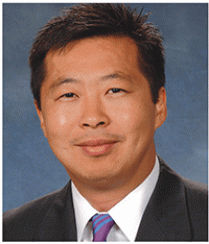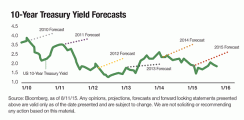To view a PDF of this report click here.

How should investors be positioning their portfolios to prepare for a return to normal interest rate policy?
Fixed income risks are starting to shift in such a way that previous safe havens are no longer serving their original purpose. Our definition of “normal” in the future does not mean a return to pre-financial crisis rates but simply a shift away from extraordinarily accommodative zero-rate policy, which was implemented in response to a crisis situation.
We believe interest rates will remain at relatively low levels for an extended period of time and that normalization will be slow and gradual, with an eventual flattening of the yield curve. So the positioning we favor is to generate incremental excess returns within the low yield environment.
While there has been significant volatility and fear around credit, we believe that credit spreads across a variety of asset areas are offering attractive risk-adjusted return opportunities. As a result, we recommend tilting portfolios to gain exposure to credit.
How will volatility and liquidity issues impact fixed income markets over the next year?
Liquidity is being constrained due to regulatory change that is limiting the ability of traditional market makers. We are seeing the greatest effects on the most traditional liquid markets, such as Treasuries and investment grade credit.
This decline in liquidity has implications for creating higher volatility, but there may be opportunities to go into some less liquid assets. For instance, high yield bonds and bank loans have always been semi-liquid markets, and these are two areas we currently see as attractive in a normalizing interest rate environment.
Declining liquidity also lowers the AUM size wherein an active manager can effectively pivot portfolios and not become primarily a beta manager.

While it is difficult to pinpoint an optimal size for a portfolio manager, there is an advantageous range in which a manager has enough scale and resources to be a strong competitor, yet is small enough to be nimble.
What strategies can investors explore to protect core bond exposures?
Investors may consider shifting toward spread-risk from primarily duration-only exposure, thinking more globally across developed and emerging markets, and exploring less-liquid fixed income assets. This also means pursuing global markets where value displacements are shifting quickly, and engaging in a more flexible multi-asset approach to take advantage of relative value opportunities.
Why might credit-oriented asset classes hold the key for driving greater alpha going forward?
The current environment of low growth and on-going central bank policy accommodation is supportive of credit assets. There are problem pockets in commodity areas such as energy, as well as idiosyncratic risks. But the current credit cycle should be more benign than past cycles, and spreads are favorably compensating investors for risk.
With greater dispersion taking place across markets, industries, and issuers, there is also an increasing opportunity to add security-selection alpha for managers who have the ability to implement credit views within their portfolios.
For more information, please visit www.pinebridge.com/FI2015





